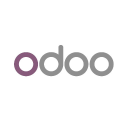How We Started A $400K/Month Origami Folding Kayaks Business
Hello! Who are you and what business did you start?
I’m Anton Willis of Oru Kayak. We make origami kayaks that fold up into a portable box. Our revenues are around $5 million per year.

What’s your backstory and how did you come up with the idea?
I grew up in the rural backwoods of Northern California. As a kid, I had two overwhelming passions: being outside, and making stuff. In college, I gravitated towards design and developed an obsession with boats- to me they really express the essence of design as a marriage between function and beauty.
It’s a lot easier to find a unique marketing or branding angle on something that’s already basically worked out, and that has factories ready to hit “go”.
Eventually, I went to graduate school for architecture and fixed up an old...

Download the report and join our email newsletter packed with business ideas and money-making opportunities, backed by real-life case studies.

Download the report and join our email newsletter packed with business ideas and money-making opportunities, backed by real-life case studies.

Download the report and join our email newsletter packed with business ideas and money-making opportunities, backed by real-life case studies.

Download the report and join our email newsletter packed with business ideas and money-making opportunities, backed by real-life case studies.

Download the report and join our email newsletter packed with business ideas and money-making opportunities, backed by real-life case studies.

Download the report and join our email newsletter packed with business ideas and money-making opportunities, backed by real-life case studies.

Download the report and join our email newsletter packed with business ideas and money-making opportunities, backed by real-life case studies.

Download the report and join our email newsletter packed with business ideas and money-making opportunities, backed by real-life case studies.














